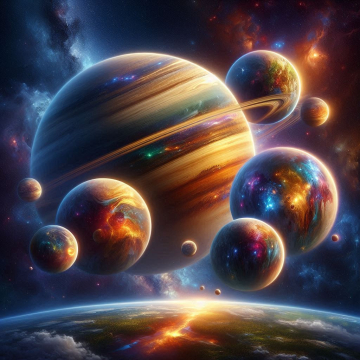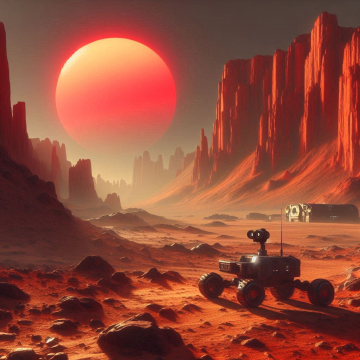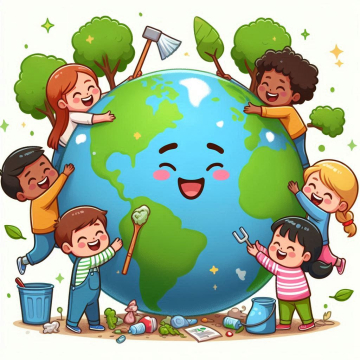The ocean and the moon are two of the most fascinating and enigmatic phenomena that nature offers us. Throughout history, they have captured the imagination of poets, scientists, and nature lovers alike. Their relationship is complex and mysterious, and has been an object of study and admiration since time immemorial. In this article, we will explore the influence the moon has on our planet's oceans, as well as the role both play in our daily lives and global culture.
The Influence of the Moon on the Oceans
The relationship between the moon and the oceans is a classic example of the influence of gravity on Earth. The moon, our natural satellite, exerts a gravitational force on the Earth, and this force is not uniform throughout the planet due to variations in the distance between the Earth and the moon. This difference in gravitational force causes tides, one of the most obvious phenomena of the moon's influence on the oceans.
The Tides: The Eternal Dance of the Moon and the Ocean
Tides are the result of the moon's gravitational pull on the oceans. The moon exerts a tidal force on the Earth, creating a bulge of water on the side of the Earth that is closest to the moon and another on the opposite side. These bumps are high tides, while the areas between them experience low tides.
The tidal cycle repeats approximately every 12 hours and 25 minutes, meaning there are two high tides and two low tides in a 24-hour period. This cycle is a manifestation of the eternal dance between the moon and the ocean, and its regularity is essential for life on Earth.
Tides have a significant impact on marine life and human activities on the coast. Many species of marine animals, such as mollusks and crustaceans, are adapted to tidal changes and depend on them for their life cycle. Additionally, tides influence shipping, fishing, and tidal energy, a form of renewable energy that harnesses the movement of water caused by tides to generate electricity.
Lunar and Solar Tides
While the moon is primarily responsible for tides on Earth, the sun also plays an important role in generating tides. During times of new moon and full moon, the sun, moon, and Earth are aligned, intensifying tidal forces. These events are known as lunar and solar tides, and the resulting tides are especially high, known as syzygy tides. On the other hand, when the moon is at a right angle to the sun on Earth, such as waxing and waning, the tidal forces counteract each other, resulting in less extreme tides known as square tides.
Spring Tides and Neap Tides
In addition to the daytime tides that we experience twice a day, there is another interesting tidal phenomenon known as spring tides and neap tides. These terms are used to describe the variability in tidal range over a lunar cycle of approximately 29.5 days.
Spring tides occur when the moon is in its new moon or full moon phase, and the solar and lunar tidal forces add together, producing higher than normal tides. In contrast, neap tides occur when the moon is in its waxing or waning phase, and the solar and lunar tidal forces counteract each other, resulting in lower tides than usual.
These spring and neap tide patterns have an impact on shipping and fishing, as changes in tidal range can influence the accessibility of certain coastal areas.
The Moon in Culture and Mythology
The moon's influence on the oceans not only has a physical impact on Earth, but has also played an important role in the culture and mythology of various civilizations throughout history.
The Moon as Deity and Symbol
In many cultures, the moon has been worshiped as a deity. For example, in Greek mythology, Selene was the goddess of the moon, associated with beauty and night light. In Roman mythology, its equivalent was Luna. These lunar deities personified the mysterious and changing light of the moon and were considered powerful divinities. In addition to its role as a deity, the moon has also been an important symbol in many cultures. It has been attributed meanings related to femininity, fertility and renewal. In some traditions, the full moon has been associated with fullness and abundance, while the waning moon has been linked with diminution and transformation.
The Moon in Literature and Art
The moon has been an inexhaustible source of inspiration for writers and artists throughout history. Poets such as William Shakespeare have used the moon as a metaphor in their works to explore themes of love, beauty, and the ephemeral nature of human life. In painting, the moon has been depicted in countless works of art, from Vincent van Gogh's famous Starry Nights to Claude Monet's serene nightscape scenes.
The Ocean and the Moon in Everyday Life
The influence of the moon on the oceans is not only an interesting phenomenon from a scientific and cultural point of view, but also has practical implications in our daily lives.
Navigation and Fishing
For sailors and fishermen, knowledge of the tides is essential. Knowing when high and low tides will occur and their amplitude is essential for safe boating and successful fishing. Tides also affect the entry and exit of ports, which can have a significant impact on the trade and economy of coastal regions.
Seawater energy
Tidal energy is a form of renewable energy that uses the movement of water caused by tides to generate electricity. As the tides rise and fall, the ebb and flow of water can be used to power turbines and generate electrical energy sustainably. This innovative approach to power generation is being explored around the world as a clean alternative to fossil fuels.
Influence on Agriculture and Fishing
In some agricultural regions, tides can also influence agriculture. In areas where crop fields are close to the coast, tides can bring salt water that negatively affects crops. Farmers should take tidal patterns into account when planning their farming activities and irrigation of their land.
As we continue to explore and better understand this relationship between the moon and the ocean, we not only expand our scientific knowledge, but we also have a deeper appreciation for the beauty and complexity of nature. The ocean and the moon remind us of the importance of caring for and preserving our planet, a place where nature's eternal dance remains a fascinating mystery that connects us all.






